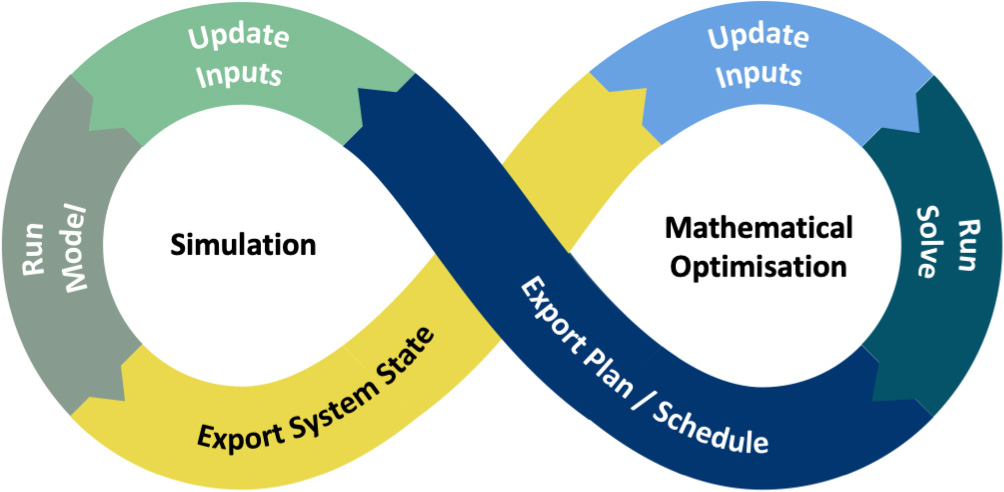Applying mathematical optimisation to simulation models
Having led simulation teams for almost 20 years, I've been part of many operations simulation projects. Project outcomes have ranged from very detailed assessments for de-risking nameplate capacity to identifying ways to significantly improve performance or demonstrate why a proposed system design won't work. Many of these outcomes have had a considerable impact on the completed projects. However, ironically the real potential of the simulation model to empower decision-makers to make better decisions is often not realised because any insights are lost in translation.
Most industrial simulation models include a representation of complex planning or scheduling logic, which is generally somewhat disconnected from any real-world decision making. For example, large port expansions are typically underpinned by the results of capacity simulation models. While the models are carefully validated against historical performance, there is no guarantee that the scheduling decision logic at the heart of the model performs the same as the actual scheduling process, particularly as system conditions change.
These include freight rail networks that operate on variable weekly plans, bulk materials terminals with competition for shared equipment, or ports scheduling ship movements within tidal windows. In these cases, integrating the simulation model with a mathematical optimisation engine is necessary to provide a realistic system representation.
The operations analysis landscape is changing in that we can now provide more direct and meaningful contributions to both new developments and existing operations. We are entering a new era with sufficient quality data, more awareness of the benefits of simulation and optimisation, and greater maturity in equipment automation and software deployment. All the pieces are there; it's just a matter of putting them together.

One of the biggest challenges for simulation has always been the representation of manual processes for complex operational decisions. For example, deciding the next draw point allocation for a loader in an underground block cave or scheduling ships competing for narrow tidal windows with passing and following constraints. However, now that optimisation tools are routinely deployed to assist with decision making, simulation models of these systems can use precisely the same decision logic as the optimisation tool used to run the operation. In other words, strategic analysis, tactical planning and real-time operations scheduling tools can all speak the same language. Taking this approach removes much of the residual uncertainly in simulation model estimates for operational performance. There are some implementation hurdles, including runtime for optimisation engines vs simulation requirements, but there are methods for managing these issues.
With the increased use of decision support tools, the applicability of simulation and optimisation now extends from concept-stage planning to real-time operations and system expansion, improving outcomes, and delivering greater visibility throughout the life of a project. Applied to a mining operation, a simulation model developed to assess capacity for a feasibility study can be run with optimised operations logic to improve project NPV. The optimised logic can then be deployed to schedule real-time mining operations and used within a simulation model integrated with the mining operation to predict likely performance over the next few hours, days, weeks, months, or years.
Polymathian's simulation capabilities are standing on the shoulders of its industry-leading optimisation and decision-support software. Together these technologies represent the next evolution of applying simulation to industry operations and putting the pieces together. Click here to learn how Polymathian applied simulation and optimisation methodologies to minimise downtime in a complex conveyor belt system.
Meet Polymathian Simulation Lead Colin Eustace

Colin has been supporting the development and adoption of simulation and optimisation technology for the last twenty years. He has extensive subject matter knowledge in resource supply chain and bulk materials handling operations which he uses to identify process improvements for complex operations with rigorous quantitative and data-driven analysis. Connect with Colin on LinkedIn.






